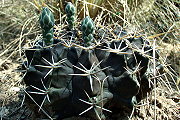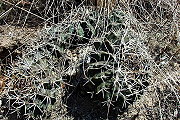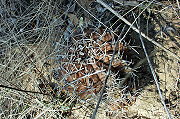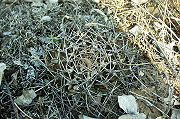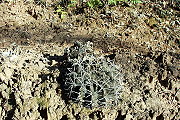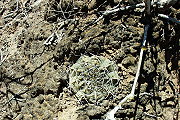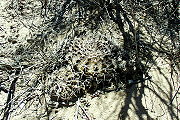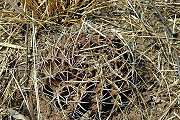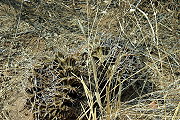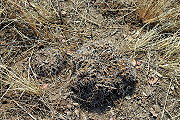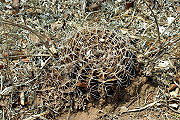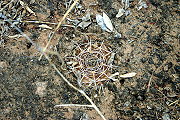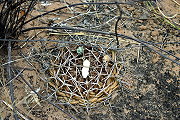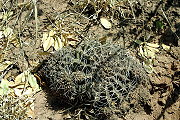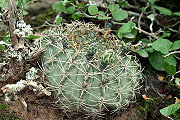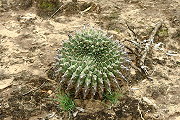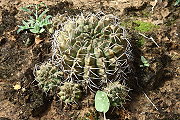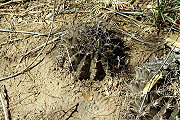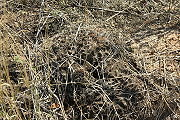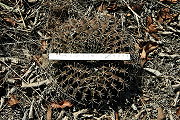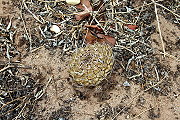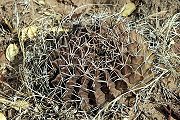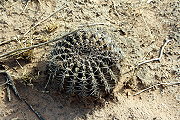Gymnos in habitat
Gymnocalycium megatae Y. Itô
Synonyms:
G. onychacanthum Y. Itô
G. tudae Y. Itô
G. eytianum Cardenas
G. itatiquense H. Till & Amerhauser
G. megatae subsp. zecheri Amerhauser
The species was described by Y. Itô in Explanatory Diagram of Austroechinocactinae in 1957. Plants used for the description were grown from seeds collected in the Chaco of Paraguay by Adolfo Maria Friedrich, who found the first plants of this species during the Chaco war from 1933 to 1935. Locations from which he collected seeds and plants were Isla Poi, about 50 kilometres south-east of Filadelfia, and the north-west of Paraguay, between Nueva Asuncion and Gral. E. A. Garay.
The bulk of the collected specimen was bought by Oreste Marsoner on behalf of Harry Blossfeld and his father Robert Blossfeld in Potsdam, Germany. The better part of these seeds and plants went directly to Japan and the USA. During the handover of plants from Friedrich to Marsoner, the latter did not take a note of the locations that Friedrich informed him about.
Itô described G. tudae and G. onychacanthum in addition to G. megatae from the same area. He names Paraguay as location for G. megatae and G. tudae and Uruguay for G. onychacanthum. Such erroneous or inaccurate data regarding locations can be traced back to Marsoner's lack of taking notes. Friedrich collected all plants in the aforementioned location. This can be ascertained from correspondence between G. Moser und A. M. Friedrich, the original of which I received from the estate of Moser.
G. megatae is a variable species whose area extends from the Serrania de Charagua, Bolivia to the Mennonite colonies of Paraguay. In my opinion, the new descriptions of select plant locations by H. Till and H. Amerhauser (G. itatiquense, G. megatae subsp. zecheri) are unwarranted.
For G. megatae subsp. zecheri heavy sprouting is given as a feature distinguishing it from the type. I am familiar with the type location and other habitats in the vicinity of Mennonite colonies in Paraguay. Solitarily growing plants can be encountered just as frequently. No other distinguishing features are mentioned.
I would like to show examples of the variability and sprouting behaviour on all locations known to me with the help of the following photographs.
